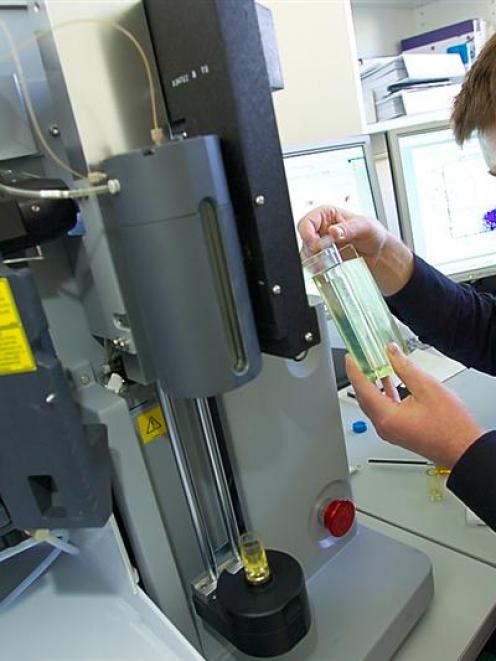
Nearly 4 billion years would pass before single celled organisms evolved into multicellular organisms.
What caused this sudden arrival of multicellular forms?
One possibility is that the advent of predators forced the leap from the unicellular life form to more complex multicellular forms. Unicellular predators were the first ‘pathogens' and evolved to obtain energy from dining on other cells, similar to the aemoeba present today in many aquatic habitats.
As multicellular organisms evolved specialized cells and tissues, ancient pathogens evolved ways to assimilate these prey structures and so the evolutionary race between pathogens and their prey began.
"We think that the first real impetus to evolve from happy unicellular organisms into multicellular organisms was driven by predator: prey relationships. We may owe our evolution from this soup of unicellular organisms into our present form to the pathogens."
As they evolved increasingly specialized tissues, multicellular life forms began to require more and more complex immune systems. About 500 million years ago, jawed fishes evolved, together with a striking innovation, called the adaptive immune system.
The first walking fishes carried this adaptive immune system onto the land and modern vertebrates, such as mammals, possess essentially the same immune system as the first fishes.
At the heart of the adaptive immune system is the ability of organisms to rearrange DNA sequences in regions of the genome in certain types of white blood cells: "This means that we are genetically modified organisms: for example, the genes that encode antibodies undergo a process called somatic gene rearrangement.
"This process occurs continuously during our lifetime and gives us the capability of producing a mind-bogglingly large number of 10 to the power of 11 different forms of antibody - enough diversity to combat almost everything the diverse and ever evolving pathogen world can throw at us."
A very useful feature of this adaptive immune system is its ability to ‘remember'; should we survive an infection, the next time we encounter the same pathogen we will mount a stronger immune response.
The success of vaccination also relies on the memorising ability of the adaptive immune response.
Microbes have evolved ways to knock out the highly evolved adaptive immune system in order to survive within the host's body.
In humans, a crucial member of the adaptive immune system is the CD4+ T lymphocyte, which is also the preferred host cell target of the HIV virus.
Infection of this cell by the HIV-virus results in drastically lowered numbers of CD4+ T lymphocytes.
As a result, the adaptive immune response is severely impaired and the virus persists in the body.
In addition, HIV-infected patients often suffer from ‘opportunistic' infection by microbes that would normally be cleared rapidly by the host immune system.
"We have always taught students that only higher organisms possess an adaptive immune system that can be enhanced by vaccination or by previous exposure to pathogens. Previously we thought that early fishes lacking jaws, namely the slimy hagfish and the lamprey, missed out on the adaptive immune system."
The recent publication of genome sequence of hagfish forced immunologists to change their viewpoint.
"We now know that hagfish possess an adaptive immune system that performs in a similar way to our own, however the molecules involved and mechanisms of genetic modification differ completely from that occurring in our bodies".
To witness a system with such a similar purpose as our own, but with such different design, is exciting to immunologists, well used to understanding only the classic adaptive immune system.
"This is a bit like a mechanic seeing for the first time the design of a petrol-driven vehicle built on a far off planet."
Other organisms that lack an adaptive immune system may compensate by evolving additional complexities in their so-called primitive immune systems.
"Take the sea urchin for example; this creature missed out on having an adaptive immune system, which means it does not have the benefit of an immune system that ‘remembers' previous encounters with pathogens and so it cannot respond more vigorously at the next encounter.
However, it compensated for this lack by evolving a vast array of pathogen biosensors."
The pathogen biosensors, called Toll-like receptors, are ancient and present in range of animals from fruit flies to humans.
While mammals possess only 10 Toll-like receptors, sea urchins have 222. "Overall, the immune system has evolved as an incredibly powerful biosensor, able to detect nanogram quantities of pathogen material.
Essentially, this is same as being able to taste ½ teaspoon of instant coffee dissolved in an Olympic sized swimming pool such as Dunedin's Moana pool."
This sensitivity enables the host to respond rapidly to the threat, right at the start of an infection.
"Because most microbes can divide rapidly, any delay in the process of pathogen recognition can be fatal." - Dr Alexander McLellan is a senior lecturer in the Department of Microbiology and immunology at the University of Otago.
